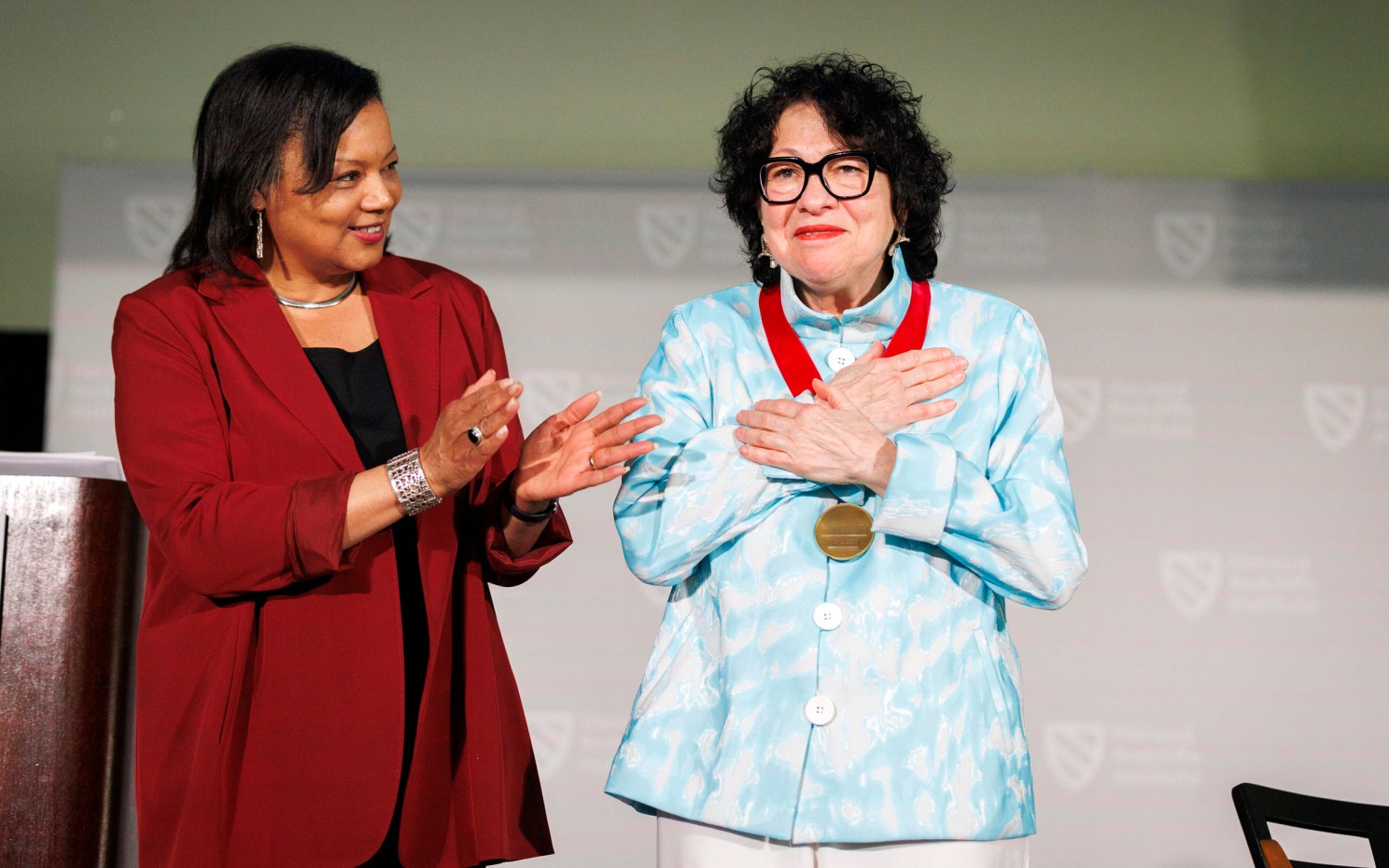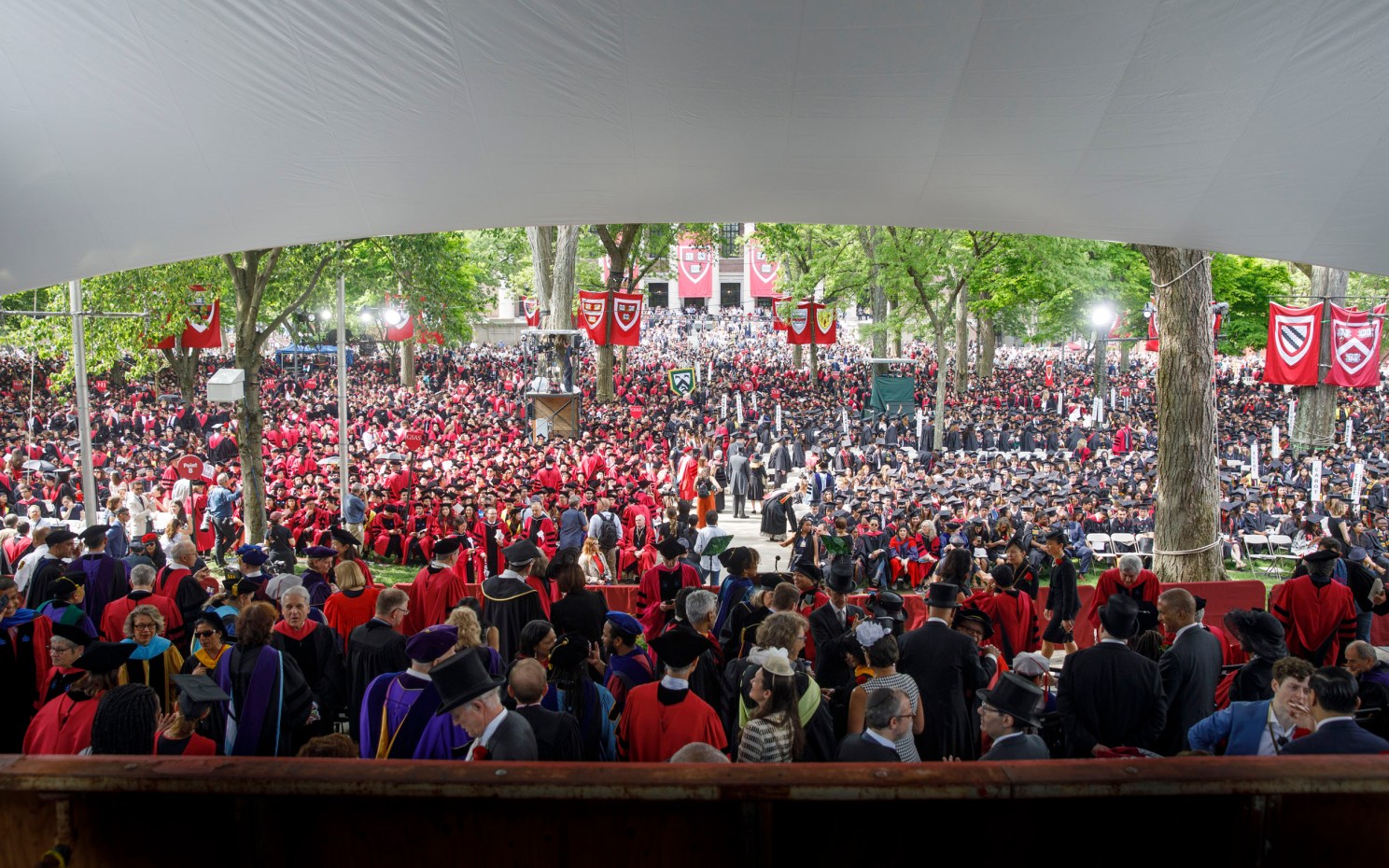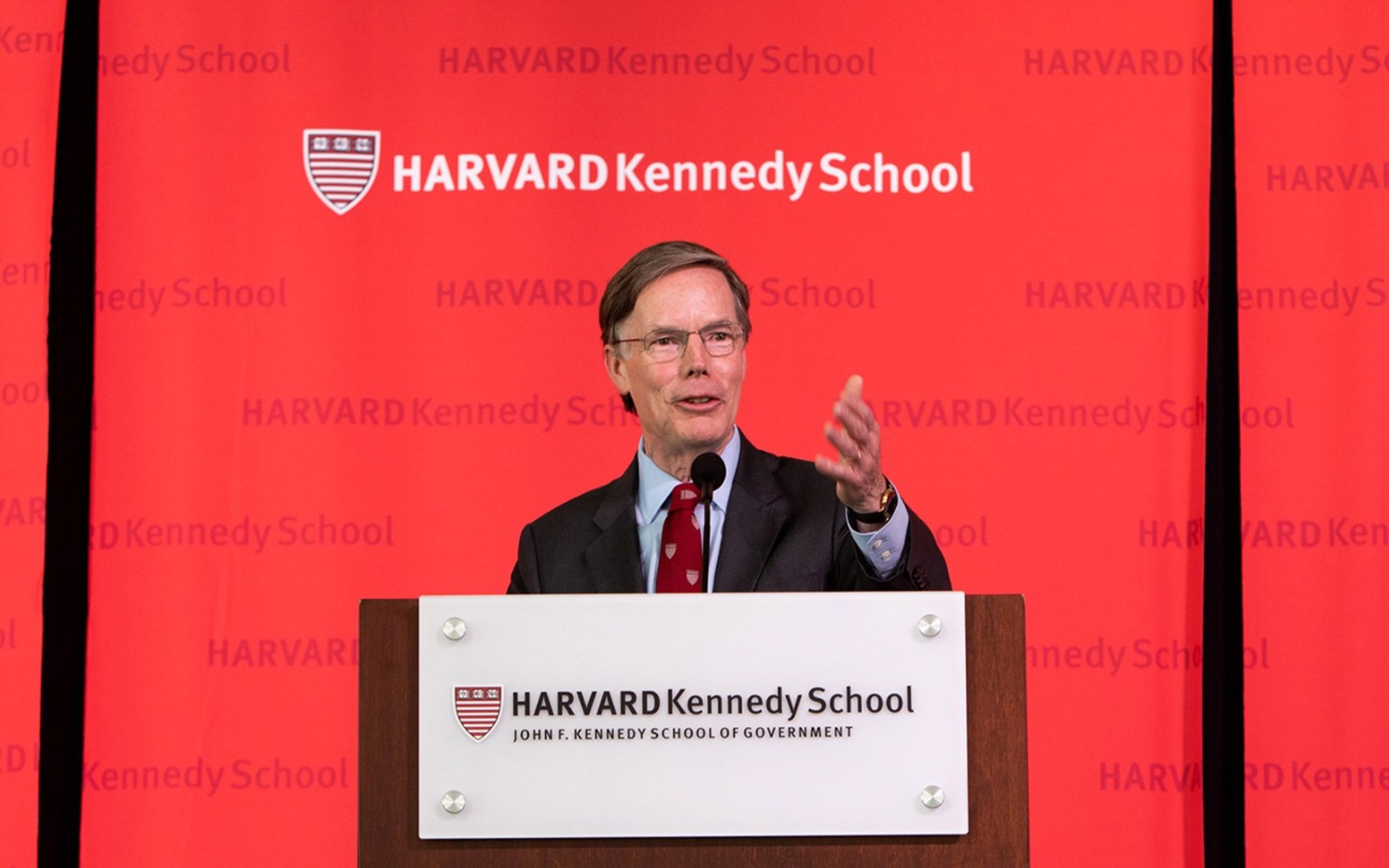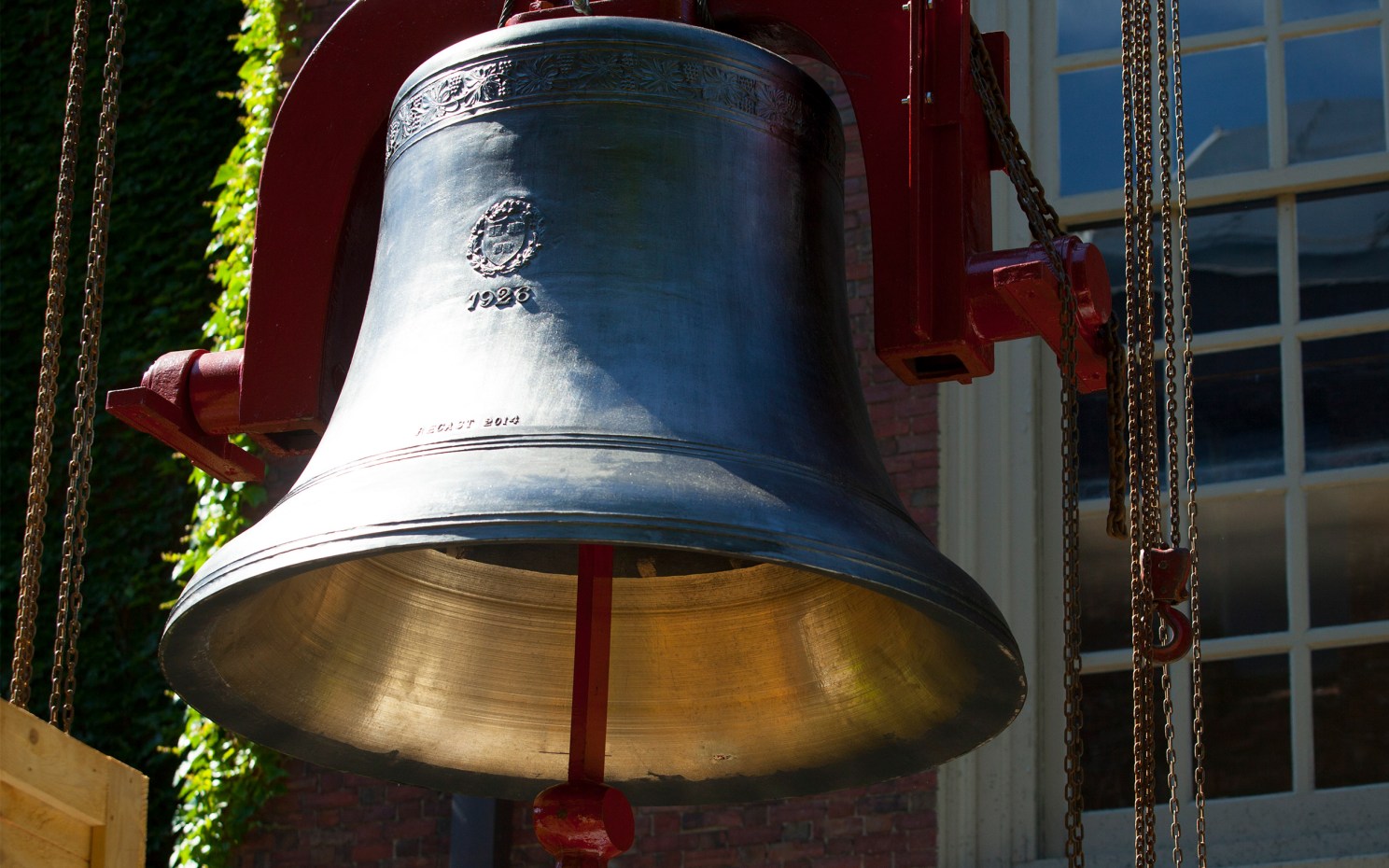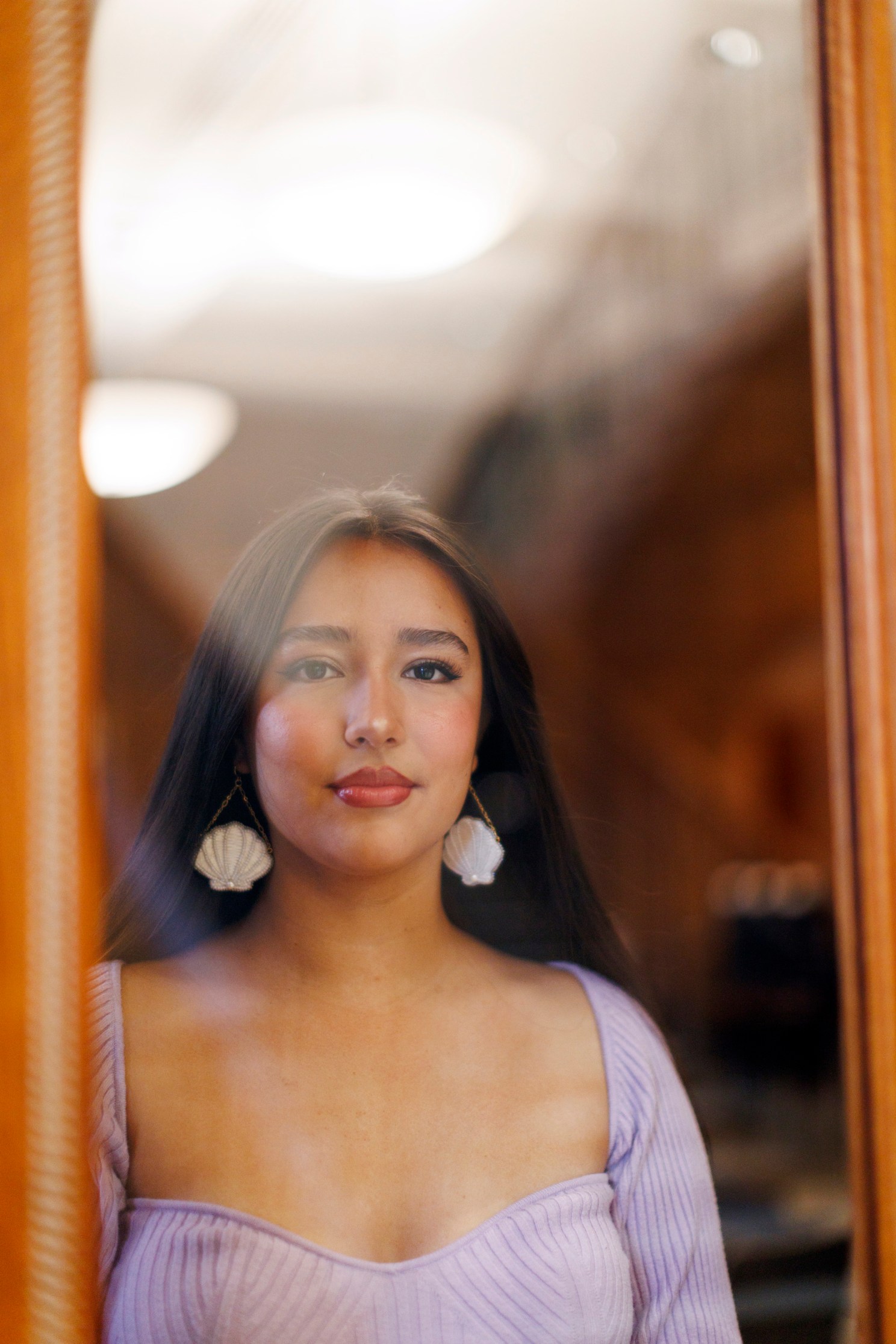
Stephanie Mitchell/Harvard Staff Photographer
A fresh take on must-see TV
Isabella Madrigal has a vision: storytelling that’s compelling, inspires better, more equitable world
Part of the Commencement 2024 series
A collection of stories covering Harvard University’s 373rd Commencement.
A family sits around a fire pit in their backyard on the Cahuilla reservation in Southern California in a scene from “Menil and Her Heart,” Isabella Madrigal’s thesis screenplay.
“Do you know who gave the arts to the Cahuilla people?” the father asks his two daughters. Menil, the youngest, says no, and the father tells the story of her namesake, Menil, the moon maiden, who “painted the world into being.”
Weaving together old family traditions of oral storytelling with modern mediums like screenwriting and acting is a skill Madrigal ’24, an English concentrator with a psychology secondary, has honed for many years.
The Adams House resident from Temecula, California, is an enrolled member of the Cahuilla Band of Indians, and of Anishinaabe, Turtle Mountain Ojibwe descent. An emerging screenwriter and actress, Madrigal has appeared in Marvel’s “Echo” (2024) TV miniseries and the show “Rutherford Falls” (2021-2022) and wants to increase Native representation onscreen and amplify overlooked voices and narratives.
“If you only have a very limited idea of who you can be — what previous media has shown — that impacts artistic creation and how you show up in the world,” Madrigal said.
It’s a different direction from where she started at Harvard. Madrigal had begun on a pre-med track, but the absence of an artistic outlet left a void. Her decision to shift her focus to arts and humanities ended up “really changing my Harvard experience,” she said.
“This idea of community- building and community-healing was always something I knew I wanted to do,” Madrigal said. “I saw an opportunity for that in medicine, but being at Harvard I’ve been able to see there are so many ways that you can engage in that kind of work.”
“I feel very different than when I came into Harvard. I have a better understanding of what I want to do and what values I have in a career space.”
Her favorite classes included “Indigenous Sci Fi, Horror, Fantasy, and Futurisms,” with Associate Professor of English Christopher Pexa, and “The Essay Film” with Assistant Professor Sky Hopinka in the Art, Film, and Visual Studies Department. While an undergraduate, Madrigal has participated in the Harvard-Radcliffe Dramatic Club and Natives at Harvard College.
“As one of the vice presidents of Natives at Harvard College, Isabella is a leader in our community,” said Jordan Clark, assistant director of the Harvard University Native American Program. “Creating space for new students to find community, providing programming, and always showing up to support other students when they need it — she plays an important role as a mentor and role model.”
Madrigal’s senior thesis screenplay, a genre-bending family drama full of magical realism, centers the issues of missing and murdered Indigenous women and girls, and two-spirit people.
When teenage Menil suddenly goes missing, her devastated family is met with indifference from local law enforcement. Older sister Nesune travels to a parallel universe to search for her, and there she discovers all the Cahuilla stories from her memory are real.
For Madrigal, who has been developing the story since age 16, the screenplay is a way to raise awareness about a crisis. The National Crime Information Center noted 5,712 reports of missing Native women and girls in 2016, and a 2018 report by the Urban Indian Health Institute identified 506 missing and murder cases across 71 U.S. cities. Abigail Echo-Hawk, the report’s co-author, was one of Madrigal’s mentors during the project.
“Theater has an incredible capacity to engage audience members and actors with social issues, inspire hope, and incite change,” said Madrigal, who hopes to one day see the screenplay become a feature film.
Madrigal staged an early play version of “Menil and Her Heart” in high school, starring her sister Sophia Madrigal ’26 and their father, Luke Madrigal.
Luke, who was instrumental in preserving the tradition of Cahuilla bird singing, passed away four months before Isabella started at Harvard. For the oldest daughter, much of her work is about honoring his legacy.
“Some of the strongest memories I have are doing that [play] together,” Madrigal said. “This project feels like it’s so wrapped up in him, which is why I see it continuing with me for so long.”
Madrigal got experience with Native-directed projects through roles in the small-town sitcom “Rutherford Falls,” filmed during sophomore winter recess, and in “Echo” the summer before her junior year. In “Echo” she played a younger version of the superhero’s grandmother Chula (Tantoo Cardinal) in a flashback scene of a dramatic birth.
“It was top secret. I didn’t have the script until a couple days before,” Madrigal recalled. “I’ve never given birth! I was asking everybody — my mom, my aunts — if they could share any tips.”
Madrigal said she has been thrilled to see more Native projects in recent years.
“Without that surge, which was decades in the making by native creators, I wouldn’t have been able to have these roles,” Madrigal said. “Native script writers and directors open up opportunities for so many more people.”
An essential part of filmmaking, Madrigal said, is working with communities to tell their stories in a responsible way, a skill she cultivated in the Harvard class “Get Real: The Art of Community-Based Film,” with associate senior lecturer on screenwriting Musa Syeed, who was also Madrigal’s thesis adviser.
“Part of the responsibility of telling that story requires conversations with culture bearers, with elders,” Madrigal said. “For me, that looked like talking through the story with people, sharing intention.”
After Commencement, Madrigal plans to shoot “Menil and Her Heart” as a short with the help of a Culture Bearer grant she was awarded by the Center for Cultural Power and the California Arts Council.
“I feel very different than when I came into Harvard,” Madrigal said. “I have a better understanding of what I want to do and what values I have in a career space. I thought an ‘artist’ was somebody who had to fit into one box. Seeing that you can do so many different things as an interdisciplinary artist has been amazing to discover.”




